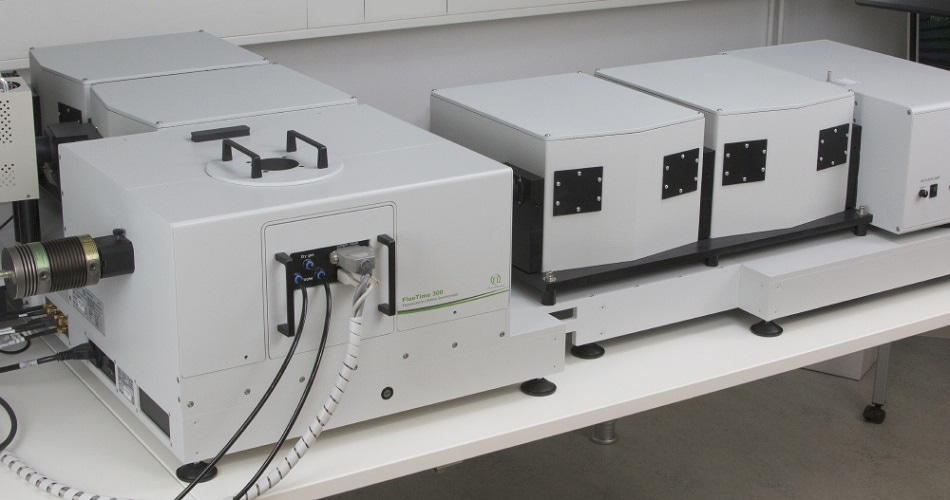PicoQuant proudly announces that the FluoTime 300 fluorescence lifetime spectrometer is now available with double monochromators in excitation and emission.

Due to the very high stray light rejection of these monochromators, the signal to noise ratio of the spectrometer is increased to more than 29.000:1 (RMS) using the standard water Raman test. Even samples with a very high scattering contribution can now be studied with extreme sensitivity and ultimate temporal resolution.
Both monochromators are supplied with special features. At the excitation monochromator, an additional motorized filter wheel is installed to suppress the second order that could lead to parasitic signals. The emission monochromator on the other hand can be used in two modes: additive and subtractive. The additive mode is ideally suited for applications that require an extremely high spectral resolution. Values as high as 0.15 nm can be reached and enable, e.g., measurements of complex molecular systems, organic semiconductor hybrids, up conversion materials.
The subtractive mode substantially improves the temporal resolution of the spectrometer and is therefore the mode of choice to study very short fluorescence lifetimes. An Instruments Response Function (IRF) of the system as short as 60 ps (FWHM) can be reached already in combination with a picosecond pulsed diode laser and a PMA Hybrid detector. This very low value permits to resolve fluorescence lifetimes of even below 10 ps.
Both double monochromators are fully controlled from the user-friendly system software EasyTau of the FluoTime 300 spectrometer. Switching between additive and subtractive mode requires only a single mouse click.
The new double monochromators strongly improve the capabilities of the FluoTime 300, making it a powerful spectrometer that is ideally suited for scientist working in material science, life science research, sensitive analytics and many more applications.